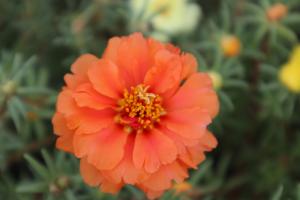When to Plant Pumpkins
As the leaves begin to turn and the air grows crisp, it's time to start thinking about planting pumpkins. Whether you're looking to carve spooky jack-o-lanterns or whip up some delicious pumpkin pies, getting your pumpkin seeds in the ground at the right time is key to a successful harvest. In this article, we'll explore when to plant pumpkins and what you need to know to ensure a successful crop.
Planting Dates
The ideal time to plant pumpkins depends on where you live and the specific variety of pumpkin you're planting. In general, you want to plant your seeds after the last frost date in your area. This ensures that the soil is warm enough for the seeds to germinate and that the young plants won't be damaged by cold temperatures. For most areas in the United States, this means planting in late May or early June.
If you're in a warmer climate or planting a variety of pumpkin that requires a longer growing season, you may want to plant a bit earlier. Conversely, if you're in a cooler area, you may need to wait until later in the summer to plant your seeds. Consult with your local gardening resources or a farmer in your area to get more specific advice on planting dates.
Preparing the Site
Before planting your pumpkin seeds, you'll need to prepare the planting site. Choose a location that gets plenty of sunlight and has well-draining soil. If possible, work in some compost or other organic matter to help enrich the soil.
Pumpkin vines can sprawl out over a large area, so make sure you have enough space for your plants. You can also provide support structures such as trellises or stakes to help keep the vines off the ground.
Planting and Care
When planting your pumpkin seeds, aim for a depth of about an inch in the soil. You can plant them directly in the ground or start seeds indoors and then transplant them once the weather warms up.
Once your pumpkin plants are established, you'll need to provide regular care. Make sure they get plenty of water, especially during dry spells. You may also want to fertilize the plants periodically throughout the growing season to encourage healthy growth.
Protecting Your Pumpkins
Pumpkins are vulnerable to a variety of pests and diseases, so it's important to take steps to protect your plants. Keeping the area around the plants free from debris and regularly inspecting for signs of problems can help you catch any issues early.
You may also want to consider using natural pest deterrents such as neem oil or organic insecticidal soap. If you're dealing with a specific pest or disease, consult with a local gardening expert or nursery for advice on the best way to address the problem.
Harvesting Your Pumpkins
Depending on the variety you plant, your pumpkins should be ready to harvest in 80 to 120 days. To determine if your pumpkins are ripe, check the skin for a hard, dark color and a hollow sound when you tap it. Cut the pumpkins from the vine using a sharp knife or pruners, leaving a few inches of stem attached.
Once harvested, your pumpkins can be used in a variety of ways. Roast the seeds for a healthy snack or puree the flesh for use in pies, soups, and other dishes.
Conclusion
Planting pumpkins can be a fun and rewarding experience, whether you're growing them for decorations, cooking, or both. By taking the time to choose the right planting dates, prepare the site, and provide proper care, you'll be well on your way to a bountiful harvest. With a little patience and some hard work, you'll soon be enjoying the fruits of your labor!

 how many times do yo...
how many times do yo... how many planted tre...
how many planted tre... how many pine trees ...
how many pine trees ... how many pecan trees...
how many pecan trees... how many plants comp...
how many plants comp... how many plants can ...
how many plants can ... how many plants and ...
how many plants and ... how many pepper plan...
how many pepper plan...































